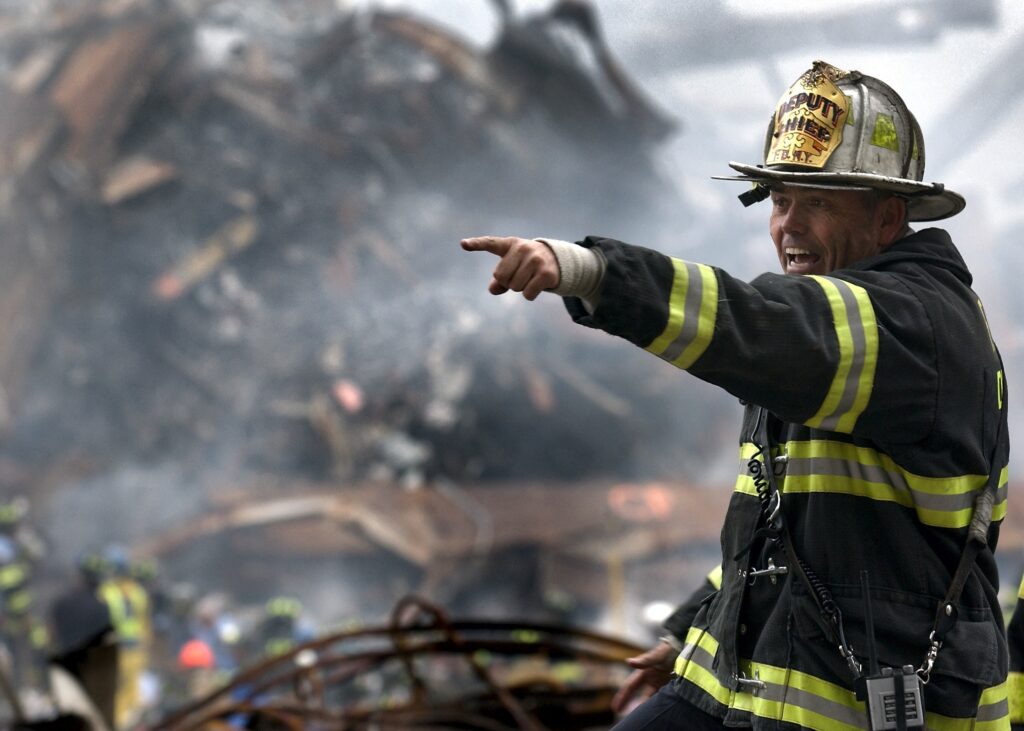Organizational (Workplace) Trauma: What it looks like

Have you ever experienced trauma in the workplace? Just like individuals and groups, organizations can experience trauma as well. Organizations are alive and constantly changing because humans are the ones to make up these organizations. The organizations grow, change, stagnate or “die” depending on the people who are part of them, their values, perspectives, actions, inactions, etc.
We might think of organizations as just businesses or buildings where we go to get what we need. But the true organizations are the people that work both at the front and behind the scenes to make things happen.
Because organizations are shaped by the people who are involved with them, they are prone to be affected by the trauma or triggers that their staff and even the organization as a whole carry with them from past experiences.
Similarly, organizations are affected by the trauma and triggers of clients that interact with their staff and the organization, as said by Dr. Dawn-Elise Snipes, a licensed mental health counselor and service provider, in her video on how to create a trauma-informed workplace.
Reminder before we begin, this article was created for educational purposes only. It is not meant to diagnose or treat anything. If you need help or advice on a situation please contact a mental health professional.
Inter-relationship Trauma and Client Trauma
There are many ways that the organization, staff, and clients can impact and traumatize each other, resulting in cycles if not dealt with properly. Dr. Snipes gives an example of one way that trauma can take place. She gives us an example of trauma looking at the client first:
“Imagine a client enters the store. If the client doesn’t feel safe and respected in the environment (the store) because there’s a lot of turnovers or because the environment is unsafe or because of staff characteristics, then the client may be on edge”, Dr. Snipes says in her video.
Feeling unsafe or as if the organization doesn’t have their best interests in mind makes triggers the client and the client may react in various ways. Note that the client could also be coming in with their own problems and trauma that got triggered while being in the organization.
“That can result in becoming aggressive, irritable or belligerent with staff or other people”, says Dr. Snipes, “On the other hand, some people withdraw. They feel helpless and hopeless. And they are like ‘Screw it here we go again’.”
Dr. Snipes continues, “When they (the client) act that way with staff, it often prompts staff, unfortunately, to react in the same way towards the client. Staff and client start mirroring each other and feeding off of each other. That’s not a good situation”.
Because of their unsavory experience, the client may decide to talk about the experience with other people, as well as post it on social media. This is a way for the client to get back the power they felt lost while at the organization.
“They will do everything in their power to use social media to ‘cancel’ this organization and to warn other people about their experience”, says Dr. Snipes.
The organization now has a few choices to deal with the bad reviews: to not respond, respond belligerently (blaming the client) or look into the incident, resolve the issue and learn from it.
“The organization can say ‘let me look at exactly what happened and why this person felt unsafe, disrespected, and felt like their needs weren’t met as they expected”, says Dr. Snipes.
In workplaces that are not aware of how to deal with trauma, what usually happens is that when the organization’s reputation is damaged due to the client going on social media, the organization resorts to policy changes, layoffs, or staff blaming. This then results in high turnover and disloyalty when the organization does not take responsibility and only blames the staff.
“A lot of times staff will start looking for jobs elsewhere because they don’t feel like the organization has their back”, Dr. Snipes explains, “Then you have staff turnovers, then the client feels abandoned, and the cycle keeps going”.
Specific Organizational Trauma

While organizations are made up of individuals and can carry the individual traumas, the organization or group as a whole can experience trauma that has the potential to trigger them on future occasions. This trauma can also live through staff and organizational changes whether it is spoken about or not.
Some examples of specific organizational trauma are budget cuts, failed audits, supply chain disruptions, lawsuits, reduction in utilization, social media attacks, building structure (lack of windows or places where staff feel trapped), lack of communication (managers not talking to staff about important decisions), organizational changes like managerial switches or merges, natural disasters that affect the building, layoffs, ongoing wounding like racism or harassment, death of a colleague, bad relationship with the community, etc.
All of these threaten the organization and make its members feel hopeless, even helpless at times. Unsure of what will happen next and if they will be able to survive the event.
Workhuman, a company that helps other organizations create a better working environment for their staff, explains how a lack of communication and organizational changes affect the organization from within.
“In a traumatized organization, rumors run rampant and often take the place of official communication”, says the Workhuman article about lack of communication, “Many companies are notoriously bad at communicating in times of crisis—others are constrained by legal concerns. Silence from leadership lets the imagination run out of control, and anxiety levels run high.”
On organizational changes, Workhuman says:
“Organizational changes usually mean that workers may be taking on new roles—whether temporarily or permanently. They may take on more work or work of a different kind”, states the article on Workhuman, “This might mean taking on the role of a colleague or friend who is no longer with the company, which can be emotionally tough. They may require re-training or be facing new challenges. They may be part of a new workgroup or working for a new manager.”
Although a lot of trauma can come from the mechanics of the organization or even events outside of it, the nature of the job or work of the organization can also impact and cause trauma.
In a publication by The National Sexual Assault Coalition, it is discussed how the redemptive and empathic natures of their work impact them as an organization and as individuals.
“This work (working with the sexually assaulted and trying to prevent more assaults) is about changing society and ending sexual violence. This can often feel overwhelming and can become demoralizing”, states the Coalition, “Our work demands that we open up our hearts to
the pain of sexual violence survivors. The cumulative experience of vicarious trauma can affect organizational culture and aggravate both personal and organizational trauma.”
The Coalition continues saying that, “Our daily work activities create an intense environment and the fact that passionate advocates are drawn to coalition work tends to heighten that intensity. Often, the organizational culture adds to the intensity, through the demands of our workload and the way we communicate with one another.”
All of this, says the Coalition, creates a risk for trauma in the organization.
Staff Trauma

Staff Trauma is another type of trauma that can affect the organization. According to Dr. Dawn-Elise Snipes, around 70% of adults in the United States have experienced trauma. This means that many people in the workplace, from lower-level to higher-level positions have been through trauma that may not have been addressed.
These people get triggered, trigger other people and commence a cycle of reenacting their own trauma patterns and dynamics whether it is with other staff or with clients.
“Staff members experience harm or threat of harm due to direct actions of clients, the organization, other staff members or due to triggered memories”, says Dr. Snipes.
According to Dr. Snipes, staff members can feel a sense of unsafeness and disempowerment when they feel they could be hurt, fired, disciplined, when there is a constant change of procedures and expectations; when management suppresses their expression, when they feel a lack of support and when they encounter triggering behaviors from clients, policies or physical environments.
This all returns in cycles to the organization, worsening the trauma and even causing the death of the organization if not dealt with properly.
“Much like the trauma that individuals suffer, organizational trauma is emotionally and
cognitively overwhelming”, says The National Sexual Assault Coalition, “Trauma can fracture our self-protective structures, making us feel vulnerable and helpless. Trauma has lasting psychic and cultural impact, especially if left unaddressed”.
Trauma Responses in Staff and Clients
In her video, Addressing Triggers in a Trauma-Informed Workplace, Dr. Dawn-Elise Snipes, licensed mental health counselor, and service provider talks about how the staff and clients react to trauma physically, affectively, cognitively, and relationally towards each other and the organization.
Physically staff and clients can suffer from health issues like sleep, pain or addiction. They can also become verbally or physically aggressive, or withdraw as a learned sign of helplessness.
Affectively, staff and clients can become depressed, angry, they can become anxious and engage in blaming behaviors.
With the cognitive side, you may see negativity, pessimism, poor problem solving, reduced productivity, or quality of work due to not feeling safe or feeling ignored. And, they may begin to make frantic efforts to avoid abandonment if they feel the threat of the possibility of being fired or moved to another position.
Trauma Responses in Organizations
Similar to staff and clients, organizations also have trauma reactions. Along with reactions to trauma in physical, affective, cognitive, and relational terms, Dr. Snipes adds the environmental aspect to the trauma reactions organizations have.
The physical reaction that organizations have to trauma is reduced productivity and revenue, increased workloads, and rapidly changing policies. On the affective side, the reaction is frantic (stressed or panicked) or resigned energy among most staff.
Cognitively, the management becomes more inflexible and authoritative because they are desperate, feel vulnerable, and out of control. Environmentally, organizations concentrate on reorganizing which can aggravate staff. And, relationally, organizations will seek to cut off relations by engaging in layoffs and by being unresponsive or unsupportive to staff and clients.
According to Dr. Snipes, there will also be a split between the upper management and the staff which can further the problem, ending in complete breakage of relationships. This is what The National Sexual Assault Coalition calls “closed boundaries”.
“Similar to individual survival strategies, organizations that are traumatized or frightened often close boundaries”, the Coalition says, “These constricting boundaries give rise to the over-reliance on insider relationships or an “us vs. them” mentality. This can happen between the organization and the community, or between groups within the agency.”
Other organizational reactions that the Coalition lists are:
- Stress and anxiety contagion: without constructive avenues for conversation, staff members can turn to each other in unproductive or even destructive ways, spreading stress, anxiety, and fear.
- Organizational amnesia: when we don’t talk about the trauma—or the strengths of our agency—we might forget the incident. However, the effects of it live on in the organizational culture, now influencing the organization in ways that are not understood.
- Unrecognized wounding from trauma: organizations might recognize and remember the incidents, but deny that it has effects on individuals. This is particularly common and damaging when the trauma is caused by racism or other forms of oppression in the agency. Unproductive relationships between organization and environment: unaddressed trauma eventually colors the relationship with those outside the organization, which might become openly antagonistic, or completely withdrawn.
- Limiting attitudes and worldview: our attitudes and beliefs about the world influence how we interact with it. When a traumatized organization believes, for example, that nobody in the community can be trusted to treat sexual violence survivors well, they stop collaborating with community partners or perhaps even speaking to them. If we believe that our work is hopeless and that sexual violence will never end, we might lose energy for completing projects or have trouble retaining staff. These limiting attitudes and worldviews can lead to an erosion of identity, where we forget who we are as an organization or lose faith in our abilities.
- Depression, despair, and loss of hope: when an organization becomes depressed, there is a real danger of the organization failing. Depression can manifest as rapid turnover of staff and board members, regularly missing grant deadlines, and something else probably.
Trauma Triggers

We’ve given you an idea of how traumas manifest and how the reaction to them are but, what triggers the trauma? According to Dr. Snipes, there are three basic traumas that the organization, staff, and clients regularly contend with these are abandonment traumas, neglect or abuse, and other losses.
For organizations, the trauma of abandonment is triggered by projection, staff turnovers, and client turnovers. The traumas of neglect or abuse are triggered by being “canceled”, negative media or social media reviews, staff not doing their job, frivolous lawsuits, and projection.
The trauma of losses for the organization is triggered by the loss of funding, revenue, or license as a result of staff or client actions, natural disasters, or federal budget cuts.
Clients and Staff, according to Dr. Snipes, have similar triggers. For example, the abandonment trauma can be triggered in both clients and staff by transference, staff turnover or retirement, and client turnover or death.
The traumas of neglect or abuse can be triggered by manipulation, failure to do a job, disempowerment, unsafe environments, and organizational policies, among others.
Triggers for other losses can be loss of freedom, loss of job, loss of money, loss of rights, loss of children, etc, by the result of staff, client, or organizational actions.
Triggers are everywhere and trauma can come in any form, size, or shape. This is why it is important to learn the signs and learn how to prevent or deal with the trauma whenever possible with the help of mental health professionals and organizations.
Have you ever experienced organizational trauma? Did we miss anything? Let us know in the comments by telling us your stories. Don’t forget to follow our Youtube channel to learn more about psychology and trauma. Thank you for reading.
Sources:
Jacobsen, D., (2012, November 8). Protecting Employees From Organizational Trauma. [online] Workhuman.com. Available at: https://www.workhuman.com/resources/globoforce-blog/protecting-employees-from-organizational-trauma.
National Sexual Assault Coalition. (2016 March). Organizational Trauma and Resilience. [PDF] Resource Sharing Project. Available at: https://resourcesharingproject.org/sites/default/files/Organizational_Trauma_and_Resilience.pdf
Snipes, D. E. (2021, November 12). Addressing Triggers In A Trauma-Informed Workplace. YouTube. Retrieved from https://www.youtube.com/watch?v=UtSvSUfMn88&t=845s.
Snipes, D. E. (2021, November 9). Characteristics of a trauma-informed workplace – youtube. YouTube. Retrieved from https://www.youtube.com/watch?v=EBJExoIBQ0s.




Wow! this article elicitate the practical problems we face in our workplace. Working remotely is the best.